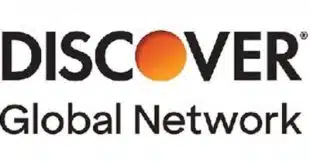Only two states now ban merchants from adding a charge for credit card usage. As it turns out, though, the strategy works better for some merchant categories than others.
Down to just two states, bans on surcharging credit card transactions have eased. Does this herald further adoption? If so, how is the payments industry readying for this next phase?
It’s been eight years since the card brands changed their rules to enable surcharging on credit card transactions for merchants that want to recover the fees they pay on each sale. In that time, several providers have emerged, but, perhaps important, all but two states now allow merchants to add surcharges. There had been three until this summer, when Colorado’s governor signed legislation allowing the practice.
The central questions now, with just Connecticut and Massachusetts retaining surcharging bans, are: Where does the practice stand now? Are merchants ready to adopt it? Will consumers accept it?
Proponents consider the timing right. Others wonder why now, if the practice has had eight years to take hold in a majority of states.
On the plus side is that merchants, long bemoaning their credit-card acceptance costs, can pass these costs along to consumers choosing to use credit cards. Surcharging only applies to credit cards, as the card brands do not permit the practice on debit card transactions.
The potential negative is fear of the reaction from consumers using credit cards, which could lead some merchants to shy away from the practice. While surcharging may not be for every merchant or every merchant category, it can be a fit for many.
A ‘Must-Have’
Advocates tout surcharging’s impact on merchant revenue. “Surcharging as a merchant service is great and offers an opportunity for small-business owners to keep costs low,” says Ben Griefer, chief operating officer at Maverick Payments, a Calabasas, Calif.-based payments provider.
“As our industry has become so price competitive, it can be difficult to continue to invest in solid support, technology development, and so on, so with a service like surcharging, it minimizes costs for the merchant while allowing us to invest as needed,” Griefer adds. “Given the bigger margins into value, [this] ultimately helps the merchants scale their business and differentiates our resellers. It’s a win-win for everyone.”
Some acquirers discussing surcharging with their merchants view it as essential.
“Acquirers are telling us that they see surcharging as a must-have. There are certain verticals where surcharging is becoming an industry standard, and any acquirer who wants to sell into these verticals has to offer a strong surcharging solution,” says Michael Tomko, chief operating officer of Chicago-based CardX, a specialist in helping merchants adopt surcharging.
Merchant awareness of surcharging is increasing, Tomko says. “Merchants are much more familiar with surcharging than they were even two or three years ago,” he says. “Many of them have seen surcharging as buyers of goods and services, and they’re often familiar with other companies that have adopted this model.”
Griefer says merchants are open to all options when it comes to their payment card processing. “There is ample opportunity for agents and sales organizations to educate their merchants on changes and optimizations to programs like surcharge or cash discount, especially with how much the payments landscape has changed in the last eighteen months,” he says. Some merchants offer cash discounts to customers who use a form of payment other than credit cards.
A divergent point-of-view, however, asks if merchants truly are interested in surcharging. “I don’t see many [merchants] doing it,” says Thad Peterson, senior analyst at AiteNovarica, a Boston-based advisory firm. While some merchants, like those with a reasonably small volume where the cost of the transaction is significant, may use surcharging, it’s not likely to spread across most merchant types, he argues.
Peterson also suggests Connecticut and Massachusetts legislators may not be in a hurry to lift their surcharging bans. Peterson agrees dropping the ban could be a business-friendly action, but legislators may see that so few other merchants are adding surcharges in other states that they may need a push, such as a large retailer adopting it, to make a change.
One big merchant, albeit for just one of its Web sites, is trying a surcharge strategy. Amazon.com Inc. was to begin imposing on Sept. 15 a 0.5% surcharge on Visa credit card transactions made on its Singapore e-commerce site.
‘The Default Option’
Relaxation of state bans has meant more small businesses and customers have freedom of choice, Griefer says. “With the new post-pandemic economy emerging, businesses will be looking for multiple ways to save money and strengthen their profit margins. States providing clear legislative and educational resources to business owners and consumers will be best positioned,” he says.
Advocates acknowledge that surcharging is not applicable to all merchants or even all merchants in the same category.
“In certain markets, it will become commonplace,” Griefer says. “Merchants are being more proactive when it comes to eliminating overhead. Value-driven consumers will understand the opportunity for savings offered.”
Merchants with higher variable costs per transaction are well-matched for surcharging or cash-discount programs, Griefer says. Cash discounts offer consumers using cash a discount off the stated retail price.
“Higher-risk businesses, or merchants with lower ticket purchases tend to have higher costs associated per transaction,” he says. “Being transparent with consumers and offering options leads to a more loyal customer base and more predictable costs.”
There’s no doubt in Tomko’s view that surcharging’s U.S. growth has been a vertical-specific story. “We believe that the program rules simply don’t work for the restaurant and retail market,” he says. “A merchant who accepts primarily debit cards isn’t going to realize major savings with credit card surcharging, and—even worse—debit cards might be as expensive as credit cards for small-ticket transactions.”
“In contrast,” he continues, “for the large-ticket, credit-heavy verticals like business-to-business transactions, professional services with invoice payments, recurring subscription payments, and logistics and freight, surcharging is quickly becoming an industry norm and merchant retention has been extremely strong.”
Business-to-business payments, in particular, hold a lot of promise for surcharging providers, Tomko says. “It appears almost certain that surcharging will become the default option in many of the industries where it has been a strong fit. Within three to five years, we expect that broad sectors of the American economy where card payments are not yet common—especially in business-to-business payments—will significantly increase their card payment volume by introducing surcharging.”
“At the same time, we don’t expect that more price-elastic businesses like retail, or small-ticket businesses like convenience stores, will embrace surcharging as a norm,” he says. “Businesses in these verticals are more likely to see equal splits between debit cards and credit cards, so eliminating the cost of credit cards will be less impactful for them.”
‘Proven at Scale’
A big wild card, however, is consumers. Their reluctance to pay surcharging fees, especially in hotly competitive arenas like retail or quick-serve dining, deters these merchants from adopting the practice.
“Customer reception still seems to hinge on how effective and clear the communication about the surcharge is,” Tomko says. “We’ve heard anecdotally about merchants using certain providers that, in addition to skirting the rules, frustrate customers by failing to proactively disclose the surcharge or itemize it on a receipt. Merchants using these providers often have to refund customers to avoid complaints.”
Griefer reiterates the importance of transparency and messaging when it comes to consumers and surcharging. “Most people understand there is an inherent cost to using cards, and whether they are choosing to use a card, or not, and when properly informed, appreciate the choice,” he says. “Additionally, businesses, specifically small businesses, benefit from this and cardholders can see it as a way to support their local businesses.”
Surcharging also may, in a way, open new markets for card acceptance, Tomko says. “Many merchants we work with have historically not accepted cards or only accepted them through limited channels (like a call center), and they view surcharging as a way to put card payments forward as a primary option while keeping their costs manageable.”
And concerns that surcharging may spur consumers to use cash may not be as prominent as once thought. “While there were initially questions about whether surcharging might steer customers to cash, as the surcharging market has matured it has become clear that the more salient story from the card-brand perspective is net-new volume,” Tomko says.
“Emerging verticals, especially in B2B and invoice payments, that have traditionally not accepted cards are now using surcharging and seeing a rapid increase in the volume of payments made by card,” he continues.
With all but two states permitting credit card surcharges, there is now an unprecedented opportunity to prove how well surcharging works, Tomko says. “Merchants throughout the country are recognizing that surcharging not only is here to stay, but has been proven out at scale—and is becoming the norm in certain verticals.”
He continues: “These state-law victories have created significant demand among merchants who operate nationally with customers in multiple states, as they’re able to provide their payers a consistent pricing model and realize more savings.”




